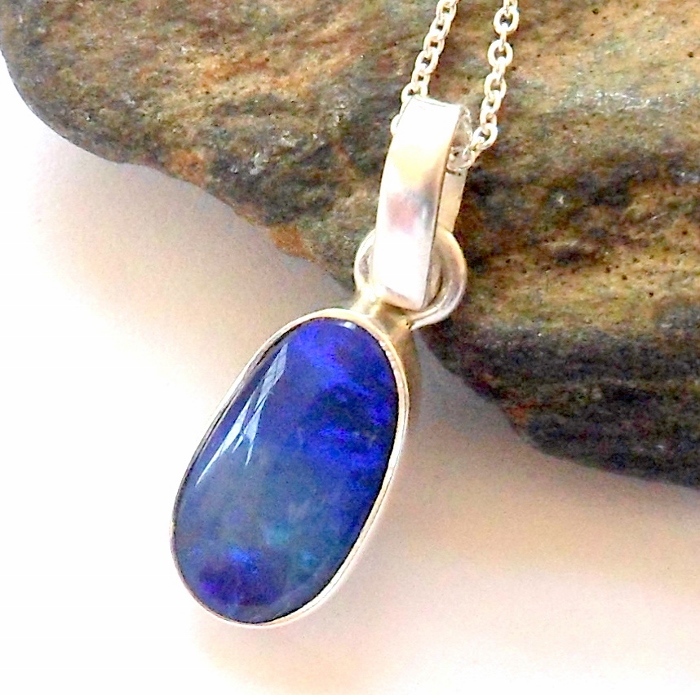Debunking Superstitions…Do Opals Bring Bad Luck?
Often when I share a post about opals like I did a few weeks ago I’m asked the same question…”Isn’t it bad luck to wear opals if they aren’t your birthstone?” October babies are probably more aware of this superstition, and I asked my mom what she’d heard about it over the years. She’s a 79 year old October baby who is not prone to following superstitions, but she had definitely heard it was bad luck to wear opals if they aren’t your birthstone. However she had no idea where she’d heard it, it was just something she knew about. Her response was to just tell everyone, “Hey if you can’t wear opals because they’re not your birthstone just give all your opals to me!” Gotta love mom, she’s a sneaky one.
Do Opals Attract Bad Luck?
In 1829 Sir Walter Scott wrote the book “Anne of Geierstein.” In the story the beguiling princess Lady Hermione wears a dazzling opal in her hair that sparkles spectacularly when she is happy, but flashes red when she is not. The opal is then sprinkled with Holy Water and the stone’s color is destroyed. Lady Hermione then becomes ill and faints and is carried off to her chamber. The next morning only a small heap of ashes are found on her bed.
Within a few months of Sir Walter Scott’s novel being published the opal market crashed and prices were down 50%. Sir Walter Scott succeeded in destroying the European opal market for at least 20 years with a work of fiction that could have featured any type of stone.
The opal market was revived during Queen Victoria’s reign in the mid-1800’s. Queen Victoria loved opals with passion and gave one to each of her 5 daughters. The Queen had an impressive collection of opals and the fashion world followed the Royal British Court. Opals suddenly became popular again.
Then at Christmastime in 1874 Charles Dickens wrote a story called “The Opal Ring” in his weekly periodical “All Year Round.” The story was built on superstitions and involves an opal with a history of bringing misfortune to its owners. Bad luck followed the opal, and once again a work of fiction cast superstition onto opals.
In 1877 an amazing black opal was discovered in South Wales, Australia. Australia’s new opal industry began with ambitious miners who worked (and occasionally died) in the remote outback. Tullie Cornthwaite Wollaston, born in South Australia in 1863, braved life-threatening conditions to acquire opals from early miners in remote, desolate areas. In 1889, Wollaston set sail for England with a parcel of raw Australian opal to introduce it to the rest of the world. In 1890 he was in London, searching for designers who could cut and polish his raw stones to match his vision. London gem merchants were unaccustomed to Australian opals and refused to purchase them. He persisted and De Beers in London was reportedly one of the first merchants to cut and polish black opals.
Australian opals slowly gained momentum in Europe. Percy Marks, an Australian jewelry designer, started working with it and made a collection for public display. In 1908 he traveled to London and won the grand prix at the Franco-British Exhibition. Europe was suddenly entranced and celebrities and nobility started wearing Australian opals.
De Beers, the diamond giant, panicked.
Numerous rumors have circulated that De Beers revived the old superstitions about opals attracting bad luck. The European diamond market was declining due to the demand for Australian black opals. I reached out to Percy Mark’s company in Australia and asked if they knew of any of the history about De Beers and opals and received this response from Cameron Marks, a direct descendant of Percy Marks…
“My great grandfather travel to England in the early 1900 to show opal and it was his experience that De Beers did talk down opal as they said it cracked and any stone that cracks is bad luck. He felt they were afraid of it and that was why they said this but it gained momentum and has always been a myth but in all the books I have read no one officially says it is bad luck.
The Chinese think opal is good luck!! I have not experienced anyone that has had bad luck from wearing opal and we have sold a lot in 120 years. I think it just one of things people say when they don’t like opal.”
Did De Beers try to sabotage the opal industry with tales of misfortune and curses brought on by the jewel? Did they revive the fictional stories written by Sir Walter Scott and Charles Dickens? Numerous sources seem to think so, some even say they launched multi-million dollar campaigns against opals. I couldn’t find any direct evidence of published anti-opals ads, but perhaps they employed a marketing strategy consisting of ominous whispers in prospective buyers ears.
De Beers has proven itself savvy at planting seeds in people’s minds. In 1938 they launched an elaborate advertising campaign to promote their diamonds in the US.
It evolved into the slogan “A Diamond is Forever.” In 1999 those four words were named the #1 advertising slogan of the century. When diamond sales were lagging from the Great Depression they attached an emotional investment to them. Diamonds meant eternal love. Their initial ads suggested a man spend at least one month’s salary on an engagement ring. In the 1980’s two month’s salary was the rule, and now it’s increased to three. Before World War II, only 10% of engagement rings contained diamonds. Now diamond engagement rings are the norm, promising endless romance and companionship, and 80% of American brides wear a diamond engagement ring. They have become tradition, entirely because De Beers created an emotional link between diamonds and love. That’s amazingly powerful advertising.
So…are opals really bad luck? Or have we just been carefully conditioned to think so?

One comment
Leave a reply